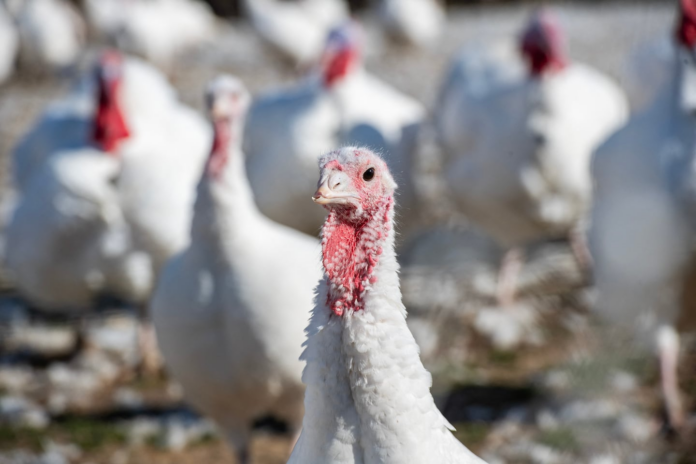Trump’s campaign promises, emerging Cabinet selections, and first-term record have worried many experts like Linder. “I expect the second Trump term to be harmful to animals in many ways,” she said.
But the policy choices and the priorities of the second Trump administration will also have profound effects on animals. “The federal government dictates a lot about the lives of all different kinds of animals,” said Ann Linder, an associate director at Harvard University’s animal law and policy program, “whether those are wild animals living free in nature, whether those are farmed animals living in intense confinement, whether those are monkeys or beagles in research laboratories.”
President-elect Donald Trump has promised to remake the federal government, an undertaking that could have far-reaching consequences for hundreds of millions of Americans and countless other people around the world.
Advertisement
Trump’s first term offered a few bright spots for animal welfare, such as a new law making certain forms of extreme animal abuse a federal crime. But in general, experts said, the administration put the interests of industry over those of animals. That pattern is expected to continue.
Get Starting Point A guide through the most important stories of the morning, delivered Monday, Wednesday, and Friday. Enter Email Sign Up
Here’s what Trump’s reelection might mean for nonhuman creatures:
Wild animals
During Trump’s first term, his administration made it easier to remove a species from the endangered list and made it harder for regulators to consider climate change threats when weighing whether to protect a species. The administration moved to open up part of the Arctic National Wildlife Refuge in Alaska to oil and gas development and, in its closing weeks, gutted protections for migratory birds.
The Biden administration reversed many of those changes. Now, they stand to be reversed again.
Trump has also promised to “free up the vast stores of liquid gold on America’s public land for energy development.” His pick for interior secretary, Governor Doug Burgum of North Dakota, has longstanding ties to fossil fuel companies and would also serve as the nation’s energy czar, Trump said. Increased energy development on public lands could degrade the habitat of declining species like the greater sage grouse, which the Biden administration recently moved to protect.
“We’re certainly bracing for impact after what we saw in the first term,” said Robert Dewey, vice president for government relations at Defenders of Wildlife, an advocacy group. “And this is probably even more of a nightmare scenario.”
Advertisement
But Timothy Male, executive director at the Environmental Policy Innovation Center, a conservation group that focuses on working with the private sector, painted a more nuanced picture.
“I expect a long list of changes that people will shriek about,” he said. “But some changes will produce real procedural improvements without much real effect at all on wildlife.” He noted that many federal environmental rules are cumbersome and outdated.
Biologists are concerned that Trump’s position on climate change could have far-reaching consequences for ecosystems and wildlife. (Trump has called global warming a “scam,” vowed to undo efforts to stem it, and pledged to “drill, baby, drill.”) Coral reefs are already being devastated by warming oceans. Animals that have evolved for life at the poles or high elevations, from polar bears to American pikas, are also especially vulnerable. Overall, climate change is putting pressure on more than 10,000 species on the International Union for Conservation of Nature’s Red List, the scientific authority on the status of species.
“If Trump’s election means that we don’t treat climate change actively, there will be many species that go extinct,” said Paul Leadley, a professor at Paris-Saclay University who focuses on the interaction between climate change and biodiversity.
Farm animals
Neither political party has a great track record on farm animal welfare, Linder said, but the first Trump administration weakened a number of regulations. It killed a rule requiring organic farmers to meet certain animal welfare standards, reduced federal oversight of pork processors, and lifted limits on how quickly they were allowed to slaughter swine.
Advertisement
Increasing slaughterhouse speeds, critics said, could increase the risk of injuries for workers and food-borne illnesses for consumers. But it could also make it more likely for animals to be handled inhumanely, and it could facilitate the expansion of animal agriculture, said Delcianna Winders, director of the Animal Law and Policy Institute at Vermont Law and Graduate School.
“The entire intent is to raise and slaughter more animals, to the tune of millions,” she said.
Some of those moves were later reversed, and the next administration is likely to advance similar proposals, said Winders, who was involved in several lawsuits against the Department of Agriculture under Trump.
Lab animals
In recent years, the federal government has retreated from certain kinds of animal testing, a trend that could accelerate during the next administration.
During Trump’s first term, the Environmental Protection Agency, which typically required that potentially toxic chemicals be tested in animals before being used in the environment, announced it would reduce testing on mammals by 30 percent by 2025 and all but eliminate it by 2035.
Animal welfare groups heralded the announcement. “It was forward thinking on the part of the Trump administration,” Amundson said.
Although the Biden administration took steps to reduce animal testing, it backed away from the EPA deadline. Animal welfare groups hoped the incoming administration would restore those benchmarks and make further commitments to phasing out animal experiments.
Cuts in federal spending could also reduce funding for scientific research, including invasive animal studies. That might have short-term benefits for lab animals, but it could undermine research into conservation, climate change and animal health.
Advertisement
This article originally appeared in The New York Times.



